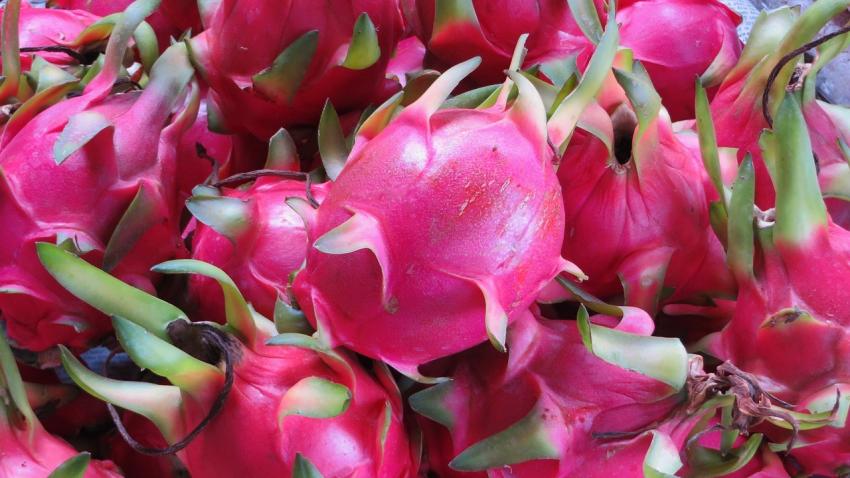You are here
Back to topVietnam’s Dragon Fruit Exports Decline by Half Since 2019

Vietnam’s dragon fruit exports have now been declining for three consecutive years, while the North American market has been dominated by dragon fruit from Mexico. As China and India have caught up in terms of supply, competition is growing even fiercer.
A dragon fruit purchaser named Hoa from Binh Thuan province stated that Vietnamese dragon fruit prices had begun to rise at the beginning of this year, but many of the fruit failed to meet export standards. According to Hoa, these export standards are becoming increasingly stringent, particularly for fruit intended for Japan and South Korea, with only a few container loads each month qualifying to be sent to these two East Asian markets.
At present, Vietnamese dragon fruit can be exported to over 15 countries and regions, including both traditional markets such as China, Thailand and Malaysia and emerging markets such as the United States, Japan, South Korea, New Zealand and Australia. In the past, Vietnam enjoyed almost complete dominance on the international dragon fruit export market, accounting for 80–90% of the total trade volume.
According to statistics from Vietnam Customs, the country’s dragon fruit exports have declined significantly since 2019. In both 2021 and 2022, the value of dragon fruit exports failed to exceed $1 billion. In 2022, the figure stood at only $632 million, representing a decrease of 39% compared with 2021 and an enormous drop of over 49% compared with the historical high recorded in 2019.
In the first two months of this year, despite good export momentum witnessed for the fruit, data from Vietnam’s Ministry of Industry and Trade show that dragon fruit exports from the country amounted to only $106 million, which still represents a 26.9% decrease compared with the same period of last year.
An industry insider from Vietnam remarked that as more countries have begun dragon fruit cultivation, competition is becoming fiercer. Nguyen Dinh Tung, general manager of Vina T&T Group, noted that although China — the main overseas market for Vietnamese dragon fruit — has reopened its market, shipping volumes have witnessed a downward trend because China is now actively developing its own dragon fruit sector.
It is projected that China’s dragon fruit output will reach 1.6 million metric tons in 2023, which would make China the world’s largest dragon fruit producer with a production volume approximately 200,000 metric tons higher than Vietnam. China’s annual market demand for dragon fruit is approximately 2 million metric tons, the majority of which can now be supplied by domestic production alone.
India, another lucrative market for Vietnamese dragon fruit, has also begun its own moves into dragon fruit cultivation. According to a goal set by the Indian government, the country intends to increase its dragon fruit planting area from 3,000 hectares to 50,000 hectares over the next five years. Meanwhile, Vietnam’s shares of the U.S. and Canadian markets have been diminishing as a result of strong competition from Mexican dragon fruit. Although Vietnam’s dragon fruit exports to the United States were displaying strong momentum 10 years ago, since 2019 Vietnamese dragon fruit have been rarely seen on the U.S. market with the exception of a few red-fleshed varieties.
Many companies in Vietnam’s dragon fruit sector anticipate a further decrease in export volume this year. If China and India’s production volumes experience further growth in the coming years, prices of dragon fruit will inevitably fall. In fact, when prices drop to a certain level, it is not inconceivable that Vietnam may import dragon fruit from these two countries.
Dang Phuc Nguyen, general secretary of the Vietnam Fruit and Vegetable Association (VinaFruit), stated that in light of the rapid development of the Chinese and Indian dragon fruit sectors, it is time for Vietnamese farmers to reassess the market and identify their own advantages. In addition to maintaining a focus on product quality, Nguyen suggests that farmers choose an appropriate time to launch their products on the market and attempt to increase their supplies during the off season. Moreover, Nguyen believes that it is important to promote red-fleshed varieties and develop Vietnam’s dragon fruit processing industry.
Image: Pixabay
This article was translated from Chinese. Read the original article.















Add new comment